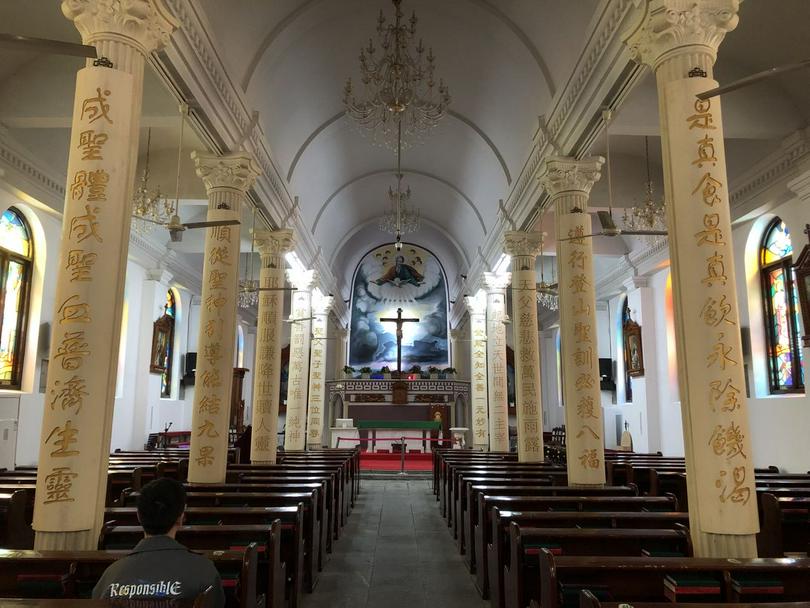On October 14, after the Asian Games, I had the privilege of being part of a faith history and culture tour in Hangzhou, Zhejiang.
Visiting the places where our spiritual ancestors in Christ lived and listening to the stories of the missionaries was meant to show our gratitude to God for bringing the gospel to us and, in the hope of following in the footsteps of those who loved the Lord, to use our own lives and respective situations to spread the gospel to all those who need it through various ministries.
Our first stop was the leprosy hospital, formerly the Hospital of Universal Benevolence. The mention of leprosy might remind most ordinary believers of the commandments and laws of the Old Testament, but what they might not be aware of is the fact that leprosy continued to exist throughout the world 2,000 years after the Lord's Day and that the mercy and grace of Jesus has been passed down through generations of Christians to this day.
When missionary Dr. David Duncan Main came to Hangzhou more than 100 years ago to take over the Hospital of Universal Benevolence, he saw that there were many lepers in the area, so Dr. Main asked the "Mission to Lepers" in his country for funds and established a leprosy hospital. At the hospital, "patients only had to pay a five-yuan registration fee when they first arrived, and no fees for the rest of their lives, until the end of their days."
Through the efforts of Dr. Main and his successor, Stephen Douglas Sturton, the hospital included a men's ward, a women's ward, an isolation ward for newly admitted lepers, and a dormitory for the nursing staff; a chapel was also added to the grounds.
Although the leprosy hospital had long since been converted into the Taoyuan New Village residential area, a group of lepers still live in a leper village in Taixing City, not far from Hangzhou. There are more than 150 lepers, most of them in their 80s or 90s, and those in their 70s considered "juniors”. "Leaving behind” her children and grandchildren, Ms. Fan, a Christian woman in her 60s, came to serve these people, coordinating with the village chief and the rehabilitation center and leading a small team of Christian volunteers to minister to the elderly. Leprosy has left some of the patients with facial disfigurement and some with physical disabilities, so the volunteers help them clean their wounds and bodies, cut their hair, and change their diapers. From oral evangelism to practicing the gospel, instead of forcibly preaching the gospel to the patients as before, the volunteers are now more willing to just serve with love, even if the patients refuse the gospel. However, by witnessing the love of Christ through their acceptance, many elderly people have accepted the gospel.
We continued along the ridge and came to the Laifeng Pavilion by the West Lake. Under the pavilion, we noticed a cliffside inscription that read, "Glory to God in Heaven, Peace and Joy to Men on Earth," testifying to the presence of the gospel at West Lake. This Cliffside Inscription had a connection to the tuberculosis sanatorium that Dr. Main had at the time but had long since stopped operating for a variety of reasons.
The tour leader pastor showed us a group photo of the Christian Youth Fellowship of the former Hangchow University (now Zhejiang University) taken during a meeting one hundred years ago; in the picture, these young people were also under the Laifeng Pavilion next to the Cliffside Inscription.
We then visited the more than 400-year-old Hangzhou Catholic Church and marveled at how believers used art forms such as architecture, painting, and carving to express the biblical story at a time when ordinary believers could not read the Bible.
We were also welcomed at Tianshui Church, located on Yesutang Lane in Hangzhou. It was the former headquarters of the American Southern Presbyterian Mission, and John Linton Stuart, father of John Leighton Stuart, the well-known missionary and first president of the former Yenching University, had served here. It was in Yesutang Lane that Leighton Stuart was born and spent his childhood and teenage years. In the former residence of Mr. Stuart, which was built some time later, we could see the deep love he had for China and the way he built sincere relationships with other people, whether they were from religious, political, or cultural circles. Mr. Stuart was finally buried here as his final resting place.
- Translated by Joyce Leung












